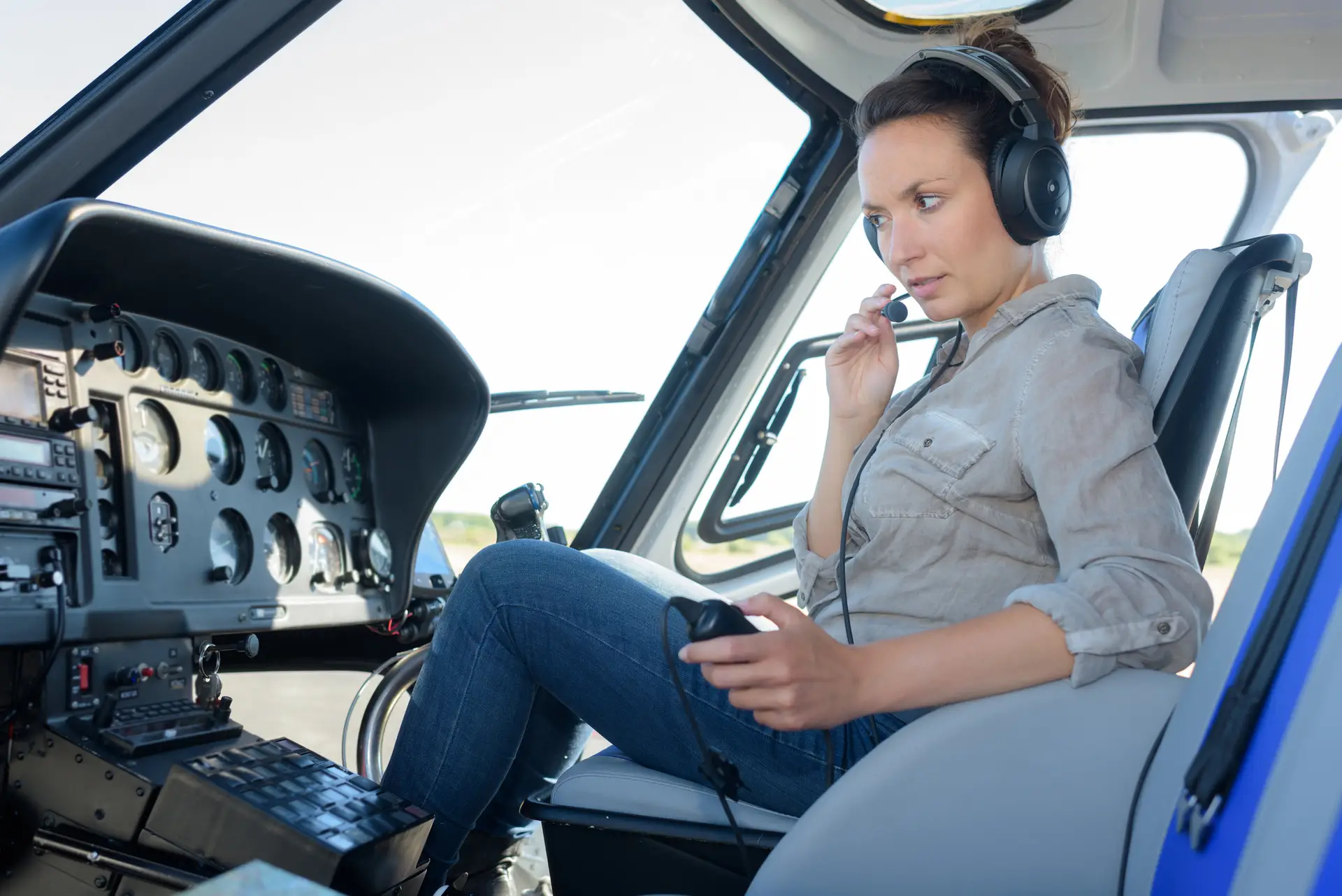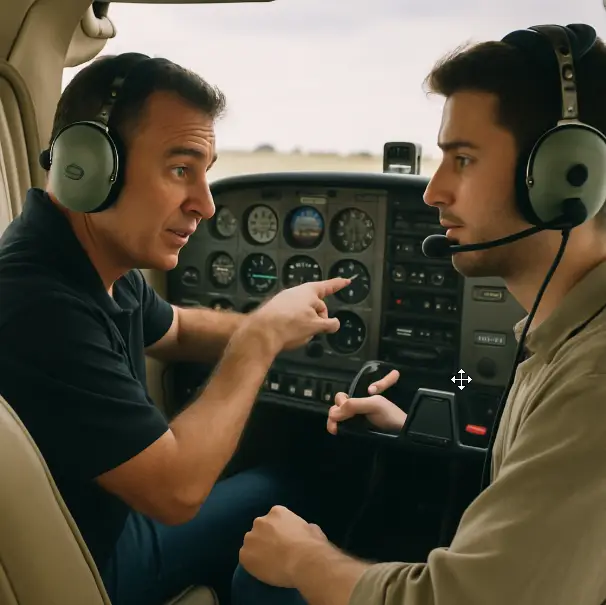Women in Aviation Breaking Barriers and How to Start Your Pilot Journey

- aviatorpro_6714
The sky has always been a symbol of limitless potential. For women in aviation, it represents a realm of opportunity, challenge, and achievement.
Yet, the journey to the cockpit is not without its hurdles. Women in aviation have faced and continue to face significant barriers. These range from societal stereotypes to institutional biases.
Despite these challenges, women have made remarkable strides in the field. They have broken barriers, set records, and paved the way for future generations. Their stories inspire us, reminding us of the power of determination and resilience.
This article aims to shed light on the role of women in aviation. It will delve into the history of their involvement, the challenges they’ve overcome, and the impact they’ve made.
Moreover, it will provide a comprehensive guide for those interested in starting their pilot journey. From educational pathways to obtaining a pilot’s license, we’ll cover it all.
Whether you’re an aspiring pilot, an aviation enthusiast, or simply curious about the topic, this article is for you. Join us as we explore the world of women in aviation, celebrating their achievements and looking forward to a future of equal skies.
Let’s embark on this journey together, ready for takeoff.
The Pioneering Spirit: Historical Context of Women in Aviation
![]()
Women have dared to defy the odds in aviation since its early days. Before airplanes became commonplace, brave women sought to conquer the skies.
Amelia Earhart is perhaps the most iconic figure in this narrative. In 1932, she became the first woman to fly solo across the Atlantic. Her achievement challenged gender norms and inspired countless others.
Yet, Earhart was not alone. Bessie Coleman, an African American aviator, broke racial and gender barriers. Denied entry to U.S. flight schools, she trained in France and became the first African American woman to earn a pilot’s license.
These pioneers set the stage for future female aviators. Their courage proved that skill, not gender, determines a pilot’s worth. They laid the groundwork for institutional change.
Here are some key milestones:
- 1910: Baroness Raymonde de Laroche becomes the first licensed female pilot.
- 1911: Harriet Quimby earns her pilot license in the U.S.
- 1921: Bessie Coleman earns her pilot license in France.
- 1932: Amelia Earhart’s solo Atlantic flight inspires a generation.
These milestones were not merely personal triumphs. They represented the breaking of societal constraints, challenging perceptions globally. Each achievement built upon the last, gradually opening aviation to women.
These early aviators sparked a movement that continues to grow. Today, their pioneering spirit motivates women across the globe. Their stories remind us that perseverance and vision can change the course of history.
The legacy of these aviators lives on. It influences current programs and encourages young women to explore aviation. The pioneering spirit of these extraordinary women continues to soar, reaching new heights every day.
Current Skies: Representation and Challenges for Women in Aviation
The aviation industry today is a vibrant landscape, yet gender disparities persist. Women make up only a small fraction of pilots worldwide. Despite progress, they remain a minority in the skies.
Several factors contribute to this underrepresentation. Cultural stereotypes and gender norms have long discouraged women from pursuing aviation careers. Additionally, the high costs of training can be prohibitive.
Despite these barriers, women are slowly gaining ground. Female pilots are increasingly visible, providing role models for younger generations. Representation matters, and it helps challenge outdated stereotypes.
Here are some current statistics:
- 7% of the world’s pilots are women.
- 5% of airline captains are women.
- 20% of air traffic controllers are women.
These figures indicate progress but also highlight the challenges that remain. Breaking into this traditionally male-dominated field can be daunting. Women often face systemic hurdles in career advancement.
The aviation industry is starting to take notice. Initiatives aiming to increase diversity are gaining momentum. Airlines and educational institutions are working to attract more female candidates.
Challenges aside, the potential for change is significant. By addressing these issues, the industry can tap into a wider talent pool. Gender diversity in aviation can lead to more innovative and effective solutions.
To further progress, ongoing efforts are essential. Supporting organizations and policy changes can foster a more inclusive environment. With continued focus, the skies can become truly representative of all who dream to fly.
The Importance of Gender Diversity in STEM and Aviation
Gender diversity is crucial in STEM fields, including aviation. It fosters innovation and broadens perspectives. Diverse teams are proven to solve problems more effectively.
In aviation, diversity ensures that solutions are comprehensive. Different experiences and viewpoints contribute to more robust decision-making. This diversity can enhance safety and efficiency across aviation careers.
Moreover, gender diversity helps challenge outdated norms. It demonstrates that women are equally capable in technical fields. More female participation can shift perceptions, making aviation more welcoming to everyone.
Finally, increasing gender diversity promotes economic growth. By tapping into underutilized talent, the aviation industry can accelerate development. This inclusive approach benefits not only women but the entire field as well.
Profiles of Contemporary Female Leaders in Aviation
The aviation industry today boasts incredible female leaders. These women serve as inspiration and role models. They are reshaping the skies and breaking new ground.
One such leader is Niloofar Rahmani, Afghanistan’s first female fixed-wing pilot. Her journey defies societal norms and cultural boundaries. Rahmani’s courage and tenacity continue to inspire many.
Another standout leader is Captain Tammie Jo Shults. A former Navy fighter pilot, she safely landed a stricken passenger plane. Her calmness under pressure saved many lives, showcasing immense skill.
Gail Grimmett is a notable figure in aviation management. As a senior executive, she has driven strategic initiatives in major airlines. Her leadership has strengthened organizational resilience and innovation.
Swinburne University’s Associate Professor, Kate Stevens, also shines. Her research work in aviation safety is groundbreaking. Stevens advocates for gender diversity, influencing positive industry change.
Judy Schueler, an expert in leadership development, rounds out these profiles. She consults with aviation businesses to foster inclusive cultures. Schueler’s impact extends beyond aviation, into broader STEM fields.
These leaders demonstrate the impact women can have in aviation. Their achievements are crucial for encouraging others to enter aviation careers. They are paving the way for future generations of female aviators.
Supporting Wings: Organizations and Initiatives for Women in Aviation
Countless organizations work tirelessly to support women in aviation. These groups offer resources, networking, and empowerment. Their efforts help bridge gender gaps in the industry.
Women in Aviation International (WAI) is a trailblazer. It’s known for its global advocacy and educational events. Each year, WAI hosts conferences and grants scholarships to aspiring female aviators.
The Ninety-Nines, founded by pioneering female pilots, is another key player. This group promotes aviation through mutual support and education. Its history is rich with advocacy for women pilots.
Dreams Soar is a newer initiative making waves. Founded by Shaesta Waiz, it’s aimed at inspiring young girls worldwide. The initiative focuses on promoting STEM education through aviation.
Below is a list of these impactful organizations:
- Women in Aviation International (WAI)
- The Ninety-Nines
- Dreams Soar
- Girls in Aviation Day
- African Women in Aviation
These organizations are essential in promoting gender diversity. They provide mentorship, scholarships, and professional development. Their impact extends across borders, influencing change globally.
Charting the Course: Educational Pathways and Pilot Training
Embarking on a career in aviation begins with education. Choosing the right educational path is crucial. From high school to specialized training, each step matters.
Aspiring pilots often start with a college degree. Many universities offer programs focused on aviation. Such degrees provide a strong foundation in related subjects.
Flight school is another critical stage. Here, students gain practical skills. This hands-on experience is essential for pilot training.
Several pathways exist to becoming a pilot. Traditional university degrees are popular. However, technical schools offer specialized courses too.
Choosing the right path depends on personal goals. Consider what aligns best with your career aspirations. Practical training can enhance classroom learning.
Here’s a list of educational paths to consider:
- University aviation degree programs
- Technical and vocational schools
- Specialized flight training academies
- Military pilot training programs
Each pathway offers unique experiences and opportunities. Some may offer quicker routes to the cockpit. Others provide broader educational backgrounds.
Educational choices also influence pilot certification. Each step brings you closer to obtaining a license. Completing flight school is crucial before advancing.
Finally, joining professional associations aids education. These provide networking opportunities and support. They connect students with seasoned professionals.
Planning your educational path is a pivotal decision. Consider researching early to understand your options. This will guide you toward a successful aviation career.
The Flight Plan: Steps to Obtaining a Pilot’s License
Obtaining a pilot’s license is a structured journey. It’s crucial to understand each step involved. Proper preparation ensures a smoother path.
Begin with meeting the basic requirements. Age and language proficiency are essential. A medical certificate is also required.
Next, choose a reputable flight school. The school will guide you through the training process. They offer the knowledge and skills you’ll need.
Ground school is part of the training. It covers flight theory and navigation. Understanding meteorology and regulations is crucial too.
Practical flight training is where skills are honed. Students fly with instructors to gain experience. This phase involves logging necessary flight hours.
Written exams test your acquired knowledge. Passing these exams is a key milestone. It’s a prerequisite before moving forward.
Flight proficiency is the next focus. This involves demonstrating skills in real conditions. Maneuvers and navigation are assessed thoroughly.
After training and exams, it’s time for a check ride. This is a practical test with an examiner. Successfully passing earns your pilot’s license.
Here’s a quick rundown of key steps to get your license:
- Meet age and health requirements
- Obtain a student pilot certificate
- Choose a certified flight school
- Complete ground and flight training
- Pass written knowledge exams
- Accumulate required flight hours
- Complete a check ride with an FAA examiner
Remember, this journey requires commitment and dedication. Each step builds on the previous one. Progressing steadily ensures readiness for the skies.
There’s more to a license than just flying. It’s about responsibility and safety. A licensed pilot must always prioritize these elements.
Embrace continuous learning throughout your career. Aviation evolves with technology and regulations. Staying informed keeps you skilled and safe.
Beyond the Cockpit: Diverse Careers in Aviation
Aviation offers a range of career paths. Not everyone needs to be a pilot. Exploring different options can lead to fulfilling roles.
Many are drawn to air traffic control. These professionals manage aircraft safely in skies and airports. It’s a vital role demanding precision and focus.
Engineering is another field thriving within aviation. Aeronautical engineers design innovative aircraft and systems. Their work ensures safety and fuel efficiency.
Those interested in management have opportunities too. Positions in airline operations or airport management are available. Leadership in these areas shapes the future of aviation.
There are numerous specializations to consider:
- Air Traffic Control: Direct aircraft movements.
- Aerospace Engineering: Develop advanced avionics and aircraft.
- Flight Dispatch: Plan flight paths and optimize routes.
- Cabin Crew: Ensure passenger safety and comfort.
- Aircraft Maintenance: Keep planes airworthy and safe.
- Aviation Management: Oversee operations and business aspects.
Choosing a non-pilot path doesn’t limit impact in aviation. Each role is integral to the industry’s success. These careers contribute to evolving and maintaining global connectivity.
Diverse roles cater to varied skills and interests. Explore all possibilities in the aviation sector. Taking initiative reveals rewarding opportunities.
Balancing the Scales: Work-Life Integration and Personal Growth
In aviation, work-life balance can be a challenge. Irregular hours and travel demands are common. However, many women find ways to create harmony.
Supportive workplaces make a difference. Policies that offer flexibility are crucial. Parental leave and scheduling options help maintain balance.
Personal growth is just as important. Continuing education and skills development open doors. Staying proactive about learning can lead to career advancement.
Integrating personal and professional goals is achievable. Setting clear boundaries enables women to excel in both areas. Prioritizing well-being fosters a sustainable career in aviation.
Strong support networks play a critical role too. Colleagues, family, and mentors provide necessary encouragement. Building these relationships boosts resilience and confidence.
By focusing on both work and life priorities, women can thrive. Success in aviation doesn’t have to come at the expense of personal growth. Through careful planning and a supportive environment, balance is within reach.
Global Horizons: International Perspectives on Women in Aviation
The aviation industry is seeing global efforts to promote gender diversity. Different countries are at various stages, each with unique challenges. However, the shared goal is increasing women’s participation.
Some nations have made significant strides. For instance, India and the U.S. lead in the number of female pilots. Their initiatives offer valuable lessons for others.
Cultural attitudes often influence women’s roles in aviation. In some regions, traditional views still present barriers. Overcoming these requires targeted educational and advocacy efforts.
International cooperation can drive progress. Exchange programs and global summits are key. They foster collaboration and share best practices, allowing for a unified approach toward gender equality in aviation.
Preparing for Takeoff: Skills, Confidence, and Self-Advocacy
Embarking on a career in aviation requires a specific skill set. Technical skills like understanding aerodynamics are crucial. Equally important are problem-solving abilities and quick decision-making.
Confidence plays a vital role in aviation careers. Believe in your capability to succeed in this challenging field. Confidence can be built through practice and positive reinforcement.
Self-advocacy is essential for career progression. Women must voice their ambitions and career goals. Networking and mentorship programs provide platforms to share experiences and advice.
Developing communication skills is important, too. Clear communication can prevent misunderstandings and foster a collaborative environment. This is key in the aviation industry where teamwork often plays a critical role.
Celebrating Milestones: The Impact of Women in Aviation
Women have left an indelible mark on the aviation sector. Their achievements resonate globally and inspire future generations. Celebrating these milestones highlights their contributions and encourages others.
Pioneers like Amelia Earhart broke records and glass ceilings. Today’s women continue this legacy in new, exciting ways. Each milestone represents a victory for gender equality in aviation.
Recognition matters in motivating aspiring aviators. Celebrating achievements acknowledges hard work and perseverance. It drives progress and sets benchmarks for upcoming talent in the field.
Sharing success stories changes perceptions and shatters stereotypes. Media coverage can shine a light on these accomplishments. It elevates the profile of women in aviation and encourages more to join the ranks.
Conclusion: The Future of Women in Aviation and Next Steps
The future of women in aviation shines brightly with potential and opportunity. As more women enter the field, gender diversity will improve. This shift will benefit the entire aviation industry.
Moving forward, fostering an inclusive environment is crucial. Policy changes and industry efforts can create equal opportunities. Companies must commit to supporting women at every career stage.
Education and exposure remain key elements. Introducing girls to STEM early paves the way for aviation careers. Mentorship programs can guide aspiring female pilots through their journeys.
For lasting change, we must celebrate current achievements while pushing boundaries. Women need to challenge norms and advocate for their rights. Together, they can redefine what’s possible in aviation.
Call to Action: Join the Movement and Start Your Pilot Journey
It’s time to take action and chase your dreams with Aviator Pro. Whether your interest is in flying or another aviation career, the industry welcomes you. Your journey can inspire others and break new ground.
Begin by seeking resources and connecting with others who share your passion. Explore educational options, and discover mentorship programs tailored for women. The skies are not the limit—your aspirations are boundless. Embrace the challenge, and join the movement today.




